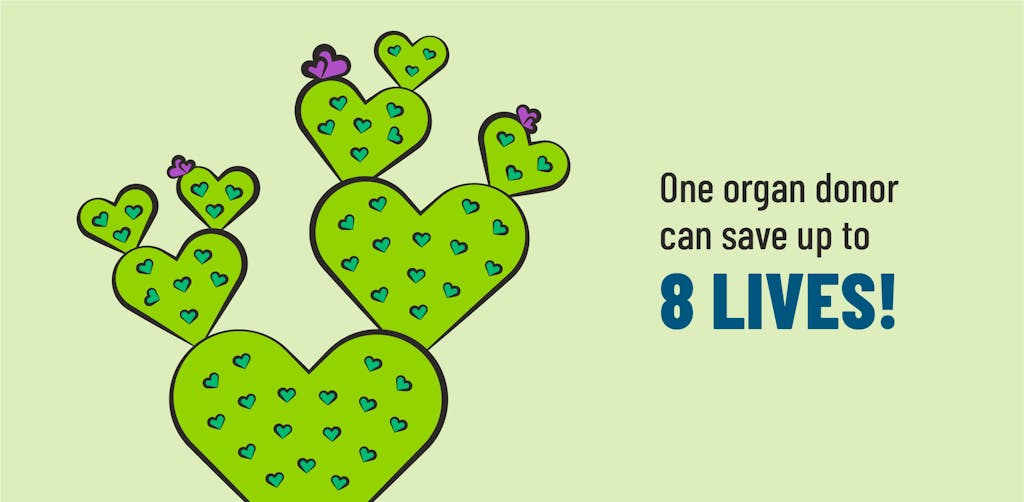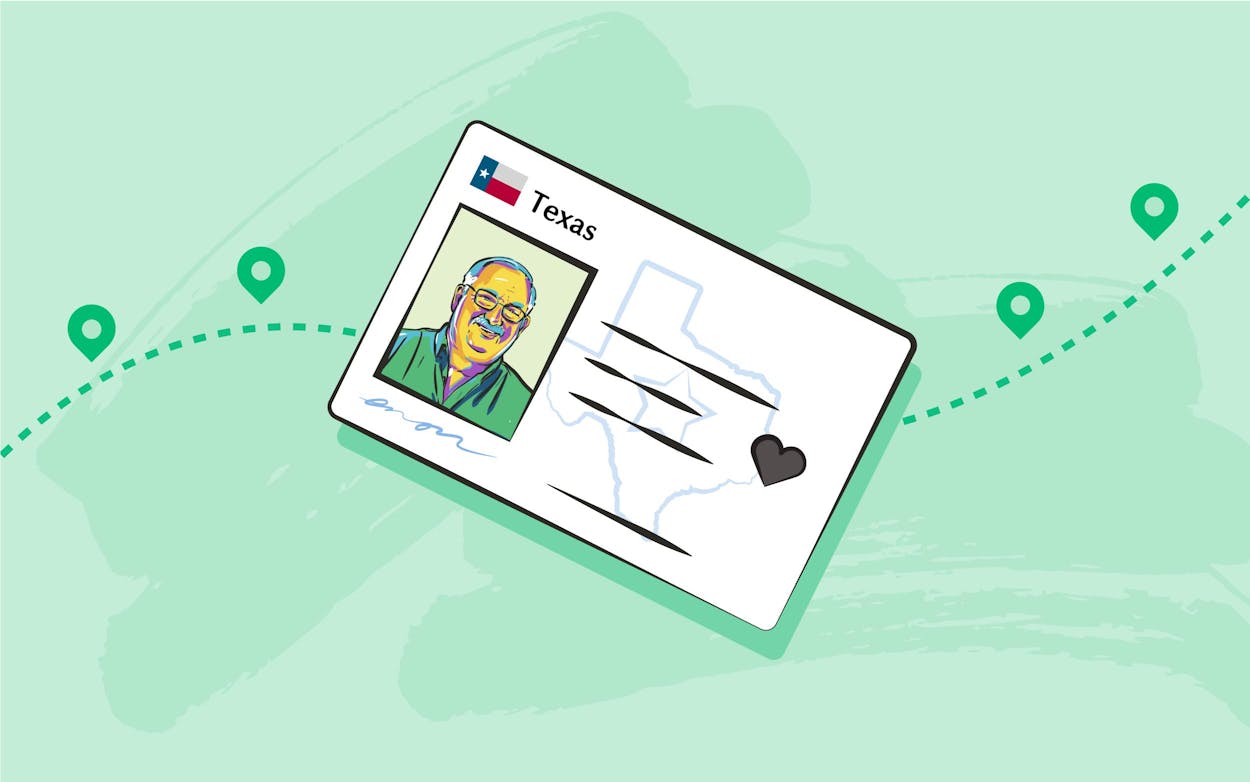When Texans say yes to organ, eye and tissue donation, they’re making a commitment to help others. In fact, one person can save and heal up to 75 lives or more through these generous gifts! If you’ve ever wondered how the decision to be a donor translates to lives saved, you’re not alone. We asked Donate Life Texas, the state’s official donor registry, to shed some light on the process.
Highly regulated organizations manage the complex and time-dependent donation process. Organ Procurement Organizations, or OPOs, are federally designated to oversee the donation process in their geographic area. Three OPOs serve the state of Texas – LifeGift, Southwest Transplant Alliance and Texas Organ Sharing Alliance. In order for the highly skilled teams at these organizations to manage the process, they first have to know that a person may have the opportunity to donate.
Hospitals are required to call their local donation agency to assess donation potential any time their teams have exhausted every opportunity to save a person’s life. “This is simply because there are so many more people in need of an organ transplant than there are organs available,” explained Chad Carroll, Executive Director of Donate Life Texas. To avoid bias and preserve the rights of the donor and their family, the hospital’s role in the donation process is completely separate from the work of the donation agency.
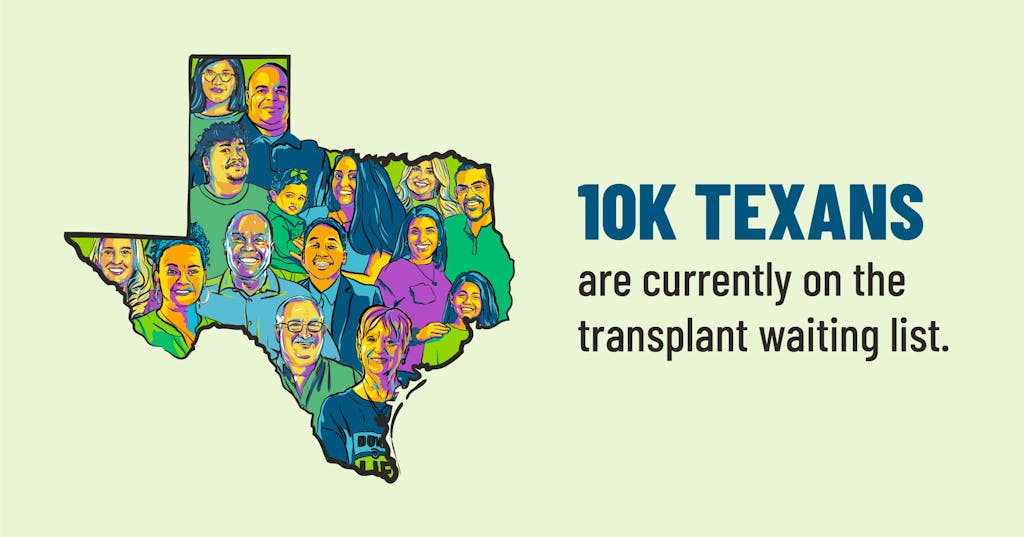
Being an organ donor requires an extensive medical evaluation, making it an incredibly rare and special opportunity. Less than 1% of people qualify to donate. In order to become an organ donor, a person must be in a hospital and on a ventilator, which works to keep organs functioning after death until they are able to be transplanted.
People who die outside of a hospital may still have the opportunity to help others through the gifts of tissue and eye donation, which require different steps and timing than the process of keeping organs like the heart, kidneys or liver ready for transplantation. These equally important gifts of bones, tendons, heart valves, veins, skin and corneas can help dozens of people. For example, skin grafts can help prevent infection and heal burn patients, and donated tendons are often used in sports injury repair.
Everything from this point hinges on getting a yes, from either the donor themselves, if they made a lifetime decision about donation, or their family in the absence of their own choice. Texans register to be a donor through Donate Life Texas, and the registry is accessed at this point to confirm donation decisions. Only donation professionals have access to the registry for the sole purpose of validating a person’s choice. “If the potential donor doesn’t have a decision documented, their family is asked to make a decision on their behalf,” says Carroll. “That’s why it’s so important to share your wishes with your family.”
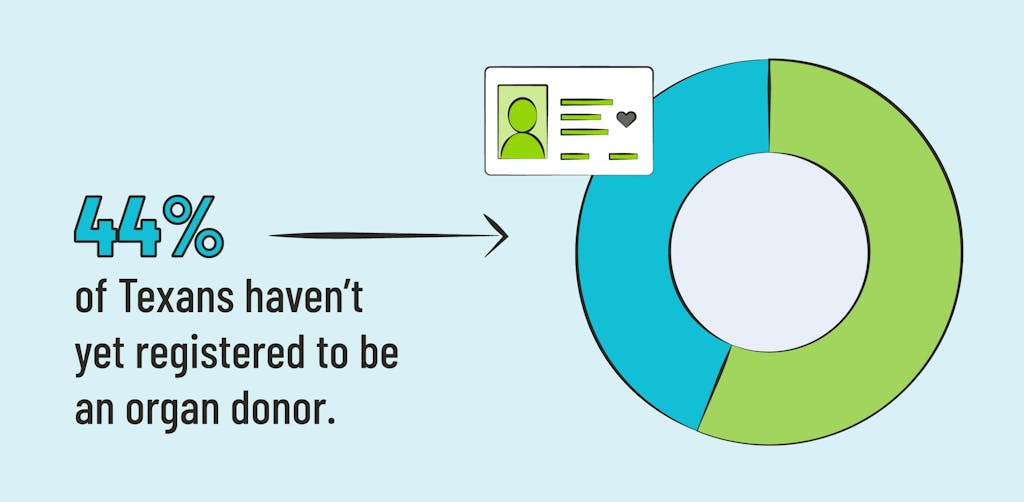
Through medical tests and talking with the potential donor’s family, medical professionals identify which organs and tissues are able to be transplanted. Organs able to be transplanted include the heart, lungs, liver, kidneys, pancreas and intestine. The team evaluates each organ to determine what’s able to be transplanted, and then sends medical information and test results to the United Network for Organ Sharing (UNOS), the organization that manages the national transplant waiting list. Organs are matched based on blood and tissue type, severity of illness, geography and size.
Once UNOS has shared the list of the best matches for each of the donor’s organs, the OPO team calls the potential recipient’s transplant center to offer the organ to their waiting recipient. If a center deems an organ not a best match for their patient, the OPO team member calls the next person on the list until all organs have been accepted for transplant. Reasons a transplant center might not accept an organ include the recipient being sick or not healthy enough to undergo surgery at that time.
After all organs have been accepted on behalf of waiting recipients, the surgeons from the accepting transplant centers travel to the donor’s hospital to recover the organs for their patients. Like any surgery, organ donation takes place in a hospital operating room with great care and concern for the donor and their family. Once the donor’s organs have been recovered, the transplant surgeons return to their center to transplant them into the waiting recipient. Organs need to be transplanted as soon as possible after recovery, so time is of the essence.
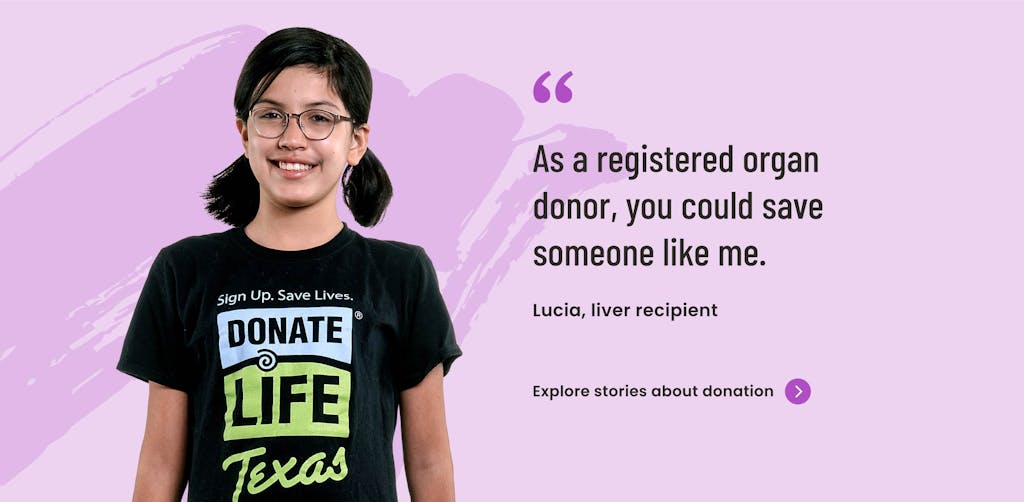
Once donation is complete, the donor’s body is carefully and respectfully reconstructed. Contrary to common misconceptions, organ and tissue donors can have an open casket funeral or viewing if the family chooses. The family receives general information about the people who received their loved one’s organs and tissues and may reach out to their recipients if they choose. “We often hear from donor families that donation brings them comfort and peace during a time of great loss,” says Carroll. “It’s an honor for us who work in donation and transplant to serve grieving families in this way.”
Learn more about the process and how to register at donatelifetexas.org
Sign up. Save Lives
Have you registered as an organ, eye and tissue donor? It’s an easy way to make a big impact.
